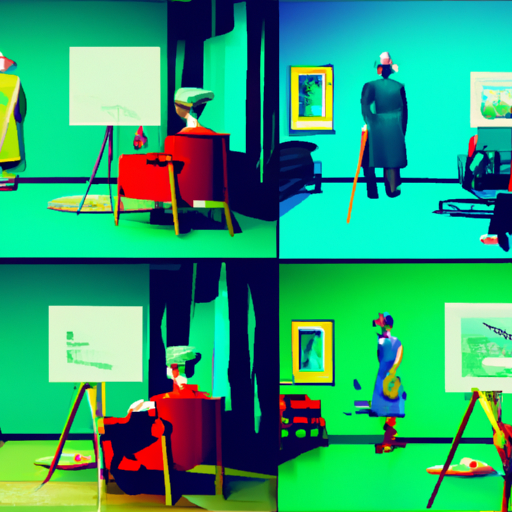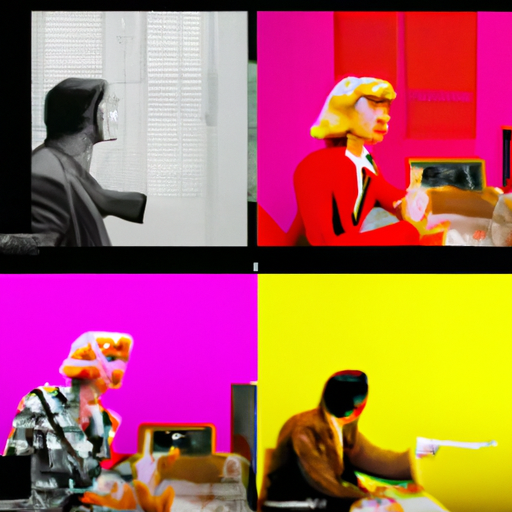
-
Table of Contents
- The Role of Art Direction in Film: From Storyboard to Set Design
- 1. The Importance of Art Direction
- 2. The Process of Art Direction
- 2.1 Storyboarding
- 2.2 Production Design
- 2.3 Set Design and Construction
- 2.4 Art Department Management
- 3. The Impact of Art Direction
- 3.1 Immersion and Suspension of Disbelief
- 3.2 Visual Symbolism and Metaphors
- 3.3 Establishing Genre and Style
The Role of Art Direction in Film: From Storyboard to Set Design

Art direction plays a crucial role in the creation of a film, from the initial storyboard to the final set design. It is the art director’s responsibility to visually translate the director’s vision and bring the story to life through the use of color, composition, and design. In this article, we will explore the various aspects of art direction in film, including its importance, the process involved, and the impact it has on the overall cinematic experience.
1. The Importance of Art Direction
Art direction is more than just creating visually appealing sets and props; it is an integral part of storytelling in film. It helps establish the mood, tone, and atmosphere of a scene, and enhances the overall narrative. Here are some key reasons why art direction is crucial:
- Visual storytelling: Art direction helps convey information and emotions visually, allowing the audience to understand the story on a deeper level.
- Creating a believable world: Art direction is responsible for creating a cohesive and believable world within the film, whether it’s a historical period, a futuristic setting, or a fantasy realm.
- Enhancing character development: The art director’s choices in set design, props, and costumes can provide valuable insights into a character’s personality, background, and motivations.
- Setting the mood and tone: Through the use of color palettes, lighting, and composition, art direction sets the mood and tone of a scene, influencing how the audience perceives and interprets the story.
2. The Process of Art Direction
The art direction process involves several stages, each contributing to the overall visual design of the film. Let’s take a closer look at these stages:
2.1 Storyboarding
Storyboarding is an essential step in the art direction process. It involves creating a sequence of drawings or digital images that represent the key moments and shots of the film. Storyboards serve as a visual blueprint, allowing the director and art director to plan the composition, camera angles, and overall visual style of each scene.
For example, in the film “Inception,” directed by Christopher Nolan, the art director used storyboards to meticulously plan the complex dream sequences and visually stunning set pieces. The detailed storyboards helped the production team bring Nolan’s vision to life and create a visually captivating film.
2.2 Production Design
Production design is the process of creating the overall visual concept for the film. It involves collaborating with the director, cinematographer, and other key members of the production team to establish the look and feel of the film. The production designer, in consultation with the art director, makes decisions regarding the color palette, set design, props, and costumes.
For instance, in the film “The Grand Budapest Hotel,” directed by Wes Anderson, the production design played a crucial role in creating the whimsical and nostalgic atmosphere of the film. The art director, Adam Stockhausen, worked closely with Anderson to design and build the intricate sets, which became an integral part of the film’s visual identity.
2.3 Set Design and Construction
Once the production design is finalized, the art director oversees the set design and construction process. This involves working with a team of set designers, carpenters, painters, and other craftsmen to bring the envisioned sets to life. The art director ensures that the sets are built according to the specifications and requirements of the script and production design.
For example, in the film “Mad Max: Fury Road,” directed by George Miller, the art director, Colin Gibson, and his team created a post-apocalyptic world filled with intricate and visually stunning sets. The attention to detail in the set design contributed to the immersive experience of the film and helped transport the audience into the dystopian world.
2.4 Art Department Management
The art director is also responsible for managing the art department, which includes set decorators, prop masters, costume designers, and other creative personnel. They collaborate closely with these individuals to ensure that the visual elements of the film align with the overall artistic vision.
For instance, in the film “Black Panther,” directed by Ryan Coogler, the art director, Hannah Beachler, played a crucial role in managing the art department and overseeing the creation of the film’s Afrofuturistic sets and costumes. Her meticulous attention to detail and collaboration with the production team resulted in a visually stunning and culturally significant film.
3. The Impact of Art Direction
Art direction has a significant impact on the overall cinematic experience. It influences how the audience perceives and engages with the story, characters, and themes of a film. Here are some ways in which art direction makes a difference:
3.1 Immersion and Suspension of Disbelief
Art direction plays a crucial role in creating a visually immersive experience for the audience. When the sets, props, and costumes are meticulously designed and executed, they transport the audience into the world of the film, allowing them to suspend their disbelief and fully engage with the story.
For example, in the film “The Shape of Water,” directed by Guillermo del Toro, the art direction played a vital role in creating a visually stunning and immersive experience. The intricate sets and detailed production design helped the audience believe in the fantastical love story between a woman and a humanoid amphibian creature.
3.2 Visual Symbolism and Metaphors
Art direction can also be used to convey symbolism and metaphors visually. Through the use of color, composition, and design, art directors can enhance the narrative and deepen the thematic layers of a film.
For instance, in the film “Hereditary,” directed by Ari Aster, the art direction employed subtle visual cues and symbolism to enhance the psychological horror elements of the story. The meticulously designed sets and props, such as miniature dollhouses, mirrors, and sculptures, added layers of meaning and contributed to the overall unsettling atmosphere of the film.
3.3 Establishing Genre and Style
Art direction plays a crucial role in establishing the genre and style of a film. Whether it’s a period drama, a sci-fi epic, or a gritty crime thriller, the art direction sets the visual tone and aesthetic of the film, helping the audience understand the genre and expectations.
For example, in the film “Blade Runner 2049,” directed by Denis Villeneuve, the art direction played a significant role in establishing the futuristic and dystopian atmosphere of the film. The visually stunning sets, combined with the use of lighting and color, created a distinct visual style that became synonymous with the “Blade Runner” franchise.
